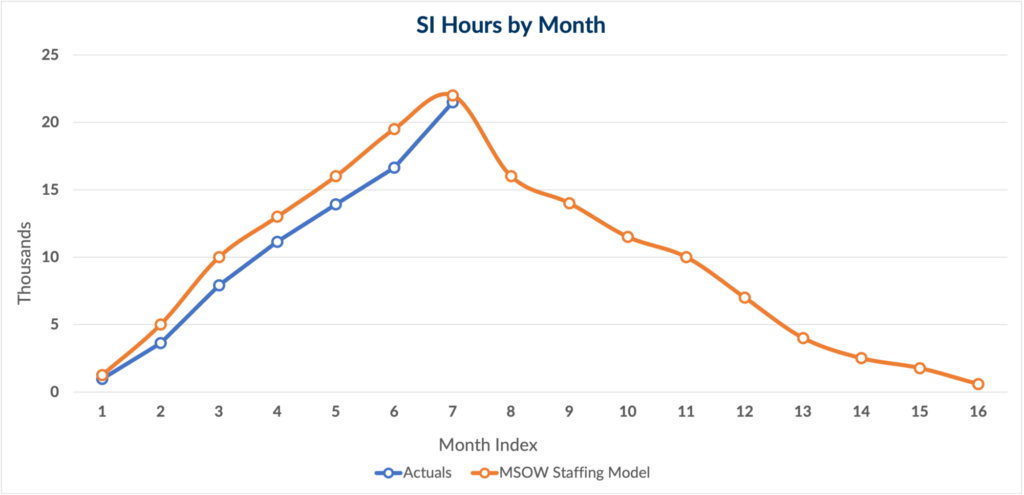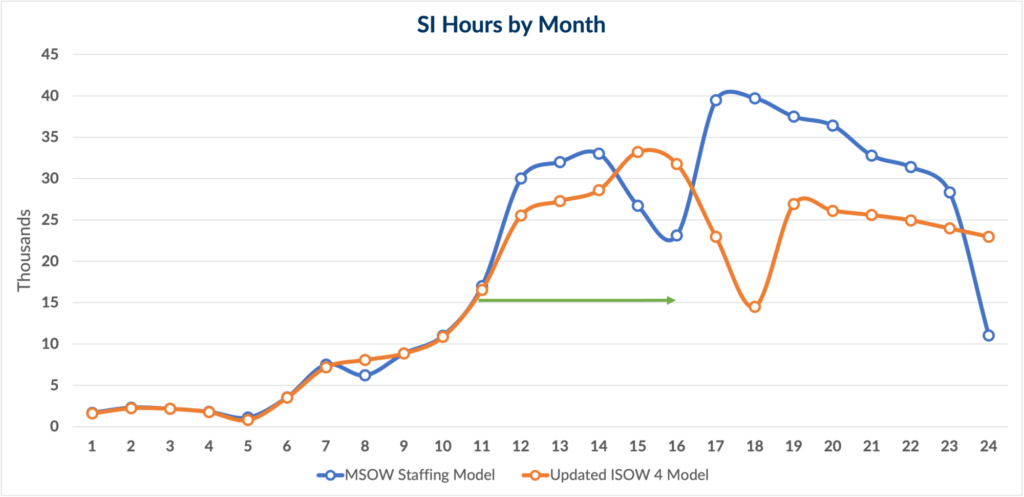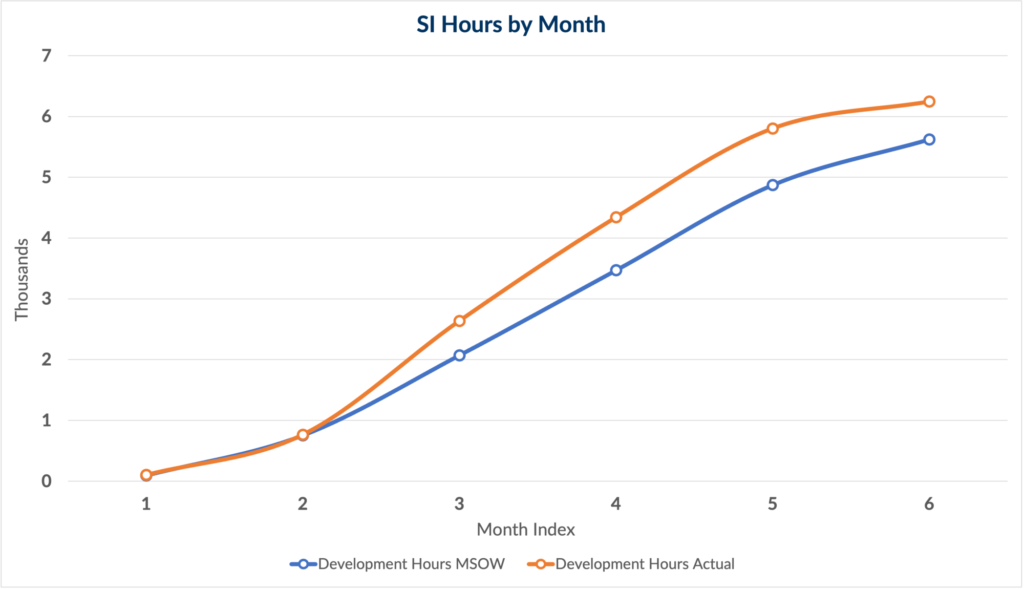- Christine Costa
- Reading Time: 4 minutes

Congratulations! You have chosen a system integrator (SI) for your transformation project and completed the arduous task of negotiating a Statement of Work (SOW), including a detailed staffing model. This is a big accomplishment – developing the scope and estimate for an enterprise-level transformation is not a simple matter.
After all this hard work, it is tempting to file that information away as “complete” as you turn your focus on executing the transformation. In fact, a transparent and detailed staffing estimate is one of the areas that does not always get fair treatment during the proposal stage and, even when it is developed, is one of the first areas to be ignored once the transformation begins. However, this is not the most effective way to ensure a successful transformation project.
Instead, it is important to ask your SI for updated staffing models at regular intervals throughout your project in order to alert you to many small program issues before they become BIG risks. Here is how updated staffing models can help with the following four common transformation program risks.
1. Alert You to Resourcing Issues With Your SI
It is no secret that quality ERP transformation resources are in short supply in the current market. Asking your SI for updated staffing models in the form of actual hours worked will allow you to catch resourcing issues from your SI that might affect your program.
The chart below shows an SI’s hours by month based on an MSOW model, or a detailed staffing model memorialized in a SOW, and the actual hours booked by SI resources per month.
Based on the data we have from this client engagement, the delta between the actual hours and the expected hours alerted the client to delays in staffing a key technology resource at the outset of the project. After determining the delay was on the SI side and not due to onboarding time constraints internally (e.g., delayed system access), this allowed the client to apply early pressure to the SI to fill the resource seat.
2. Act As a Leading Indicator of Potential Delays or Missed Milestones
On the project featured in the chart below, an updated staffing forecast from the SI alerted the client to a change in resourcing volume planned in each month compared to the original detailed staffing plan. This forecast allowed the client to see that the SI anticipated there would be a delay in a critical project milestone. This delay is indicated by the green arrow.
3. Highlight Scope Creep and/or Underestimated Complexity In a Particular Workstream
As you can see in the chart below, the development hours booked for this project outpaced the planned hours. In this case, some of the development objects – Workflows, Forms, Reports, Integrations, Conversions, and Enhancements (WFRICE) to be specific – had increased in complexity and the hours were being burned more quickly than anticipated.
What we can learn from this project is that getting an updated staffing model from your SI as a deliverable of the design phase is crucial. This deliverable allows you to reset expectations for the remainder of the program.
Additionally, obtaining an updated model post-design will allow you to validate the updated staffing model against changes in scope, object development, and assumptions to identify scope creep and to verify that only the agreed upon changes have been reflected in the newest staffing model.
4. Help You Plan Ahead for Future Needs for Internal Resources
Inevitably, scope changes happen during the course of a transformation program. To help understand and prepare for these scope changes, obtaining an updated staffing model from your SI will show the change in effort, both positive and negative, in a particular workstream or functional area.
We recommend also asking your SI for a re-forecast of the effort they will require from your internal resources. This gives you time to make internal adjustments as needed, whether it be hiring or ramping up additional resources. If you do not have the internal staff resources available for the new requirements, your SI will be happy to help fill in the gap – at a premium price.
Key Takeaways
It is critical to set expectations with your SI that you will be looking for iterative staffing models at regular project intervals. These updated models will be vital to carrying out a successful project. Additionally, set the expectation that you need to receive monthly actuals at an individual resource level. With these actuals, you can apply pressure when needed to your SI’s delays.
Be diligent in your review of staffing models against the original plan and other important project documents (RAID log, status reports) to arm yourself against any unpleasant surprises. Stay active and engaged in managing resources through the duration of your program to ensure you are ahead of any potential delays or issues. Your transformation project will be better off because of it.
At UpperEdge, we help clients understand how to effectively review staffing models to ensure project success. Explore our Project Execution Advisory Services to see how we can help.
Related Blogs
The Oracle Ecosystem: Who’s Who in a Crowded Cloud
System Integration in Progress? Don’t Let Staffing Stall Your Success
Is Your SI Still Earning Their Keep? How to Reevaluate Mid-Project Without Blowing It Up
About the Author




